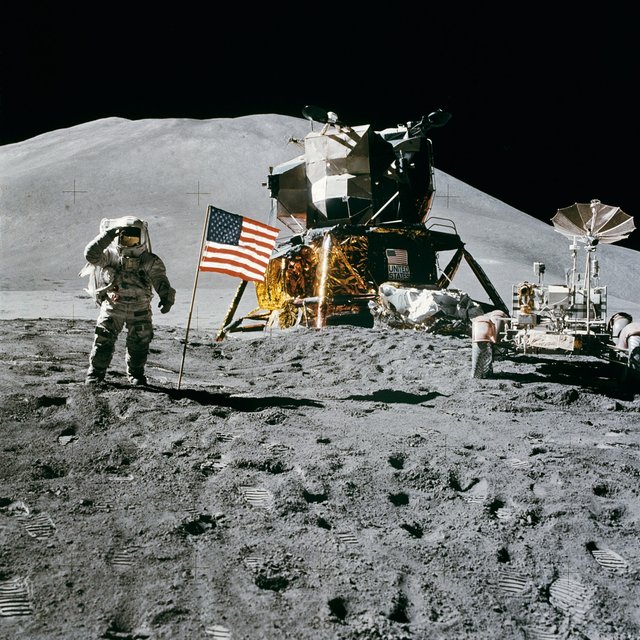As part of the Apollo 11 mission, humans set foot on the Moon for the first time in
July 1969. But why haven't we returned since the 1972 Apollo 17 mission?
Why have we not returned to the Moon?
In July 1969, the Apollo 11 Moon landing represented a significant achievement in
engineering, science, and human endeavor. The entire world had been waiting for
that moment.

Six further missions to the Moon were made after Apollo 11, five of which resulted in
successful landings. There were a total of 12 men who set foot on the moon.
However, more Apollo missions were shelved in 1970. For an undetermined period
of time, Apollo 17 was the final manned lunar mission.
Money was a major factor in this. Ironically, getting to the Moon was quite expensive.
When did we last travel to space?
Even though we haven't placed a person on the surface of the moon since the
1970s, crewed space missions are now frequently undertaken.
1973–1974: Skylab
The first space station that NASA controlled and ran was called Skylab. It was
in operation from May 1973 to February 1974. It conducted countless
experiments and had a workshop and observatory.
Skylab's creation and continued operation were postponed because of issues
with the Space shuttle's development. Eventually, there was no stopping
Skylab's orbital decline. The steady reduction of the distance between two
objects in orbit is known as orbital decay.
1981-2011:Space Shuttle
The NASA Space Shuttle was the first reusable spaceship that made it possible to
launch and land satellites on the planet. NASA was able to transport broken
satellites, repair them, and re-enter orbit thanks to the crewed spaceship. The
development of the ISS also benefited from the Space Shuttle.
1986-2001:Mir space station
Shannon Lucid, an astronaut aboard the Mir Space Station (c) NASA
The first continuously occupied research station in orbit, Mir was a Russian space
station that ran from 1986 until 2001. The success of the numerous experiments
conducted aboard the space station served as the design basis for the current
International Space Station.
1988-present:International Space Station
A continually inhabited artificial satellite in low Earth orbit is known as the
International Space Station, or ISS. The International Space Station (ISS) is a
cooperative venture of the United States, Russia, Japan, Europe, and Canada.
Astronauts reside and conduct experiments on the station for around six months at a
time
When did people last walk on the moon?
Apollo 17 was the final manned lunar mission, and it took place between December
7 and December 19, 1972. The 12-day mission shattered numerous records,
including those for the longest space walk, the lengthiest lunar landing, and the
largest lunar samples ever returned to Earth.
Geologist Harrison H. Schmitt also served as the lunar module's pilot. Ronald E.
Evans, who piloted the command module, and Eugene Cernan, who oversaw the
mission, were present with him.
Only one other Apollo mission, Apollo 17, did not include any astronauts who had
previously served as test pilots. The scientific community pushed for Schmitt to be
assigned to Apollo 17 when Apollo 18, the mission Schmitt had initially planned to go
on, was postponed.
Cernan is the most recent person to have stood on the Moon because he was the
last to leave its surface. He said as he made his way up to the lunar module:
Even if manned lunar missions are no longer being conducted, space travel and
moon studies continue. Future lunar missions are also in the works. By 2024,
NASA's Artemis Program hopes to establish a permanent human presence on the
Moon, enabling humans to visit it on a regular basis.
Why NASA decided to halt moon missions
President John F. Kennedy's 1962 speech at Rice Stadium in Houston, Texas, which
is commonly referred to as the "We Choose to go to the Moon" speech, served as
the catalyst for the race to put people on the moon. Kennedy pledged in the address
to send a person to the Moon before the end of the decade.
Kennedy's objective and timeline were both met when the Moon landing occurred in
The Apollo missions' future, however, was jeopardized by NASA's drastic financial
cuts once the objective was accomplished. There were initially 20 planned Apollo
missions, but the final three missions were cancelled since it was decided that the
Moon landing itself was more significant than the technological and research
missions.
When it helped the space race, the US government was willing to invest a lot of
money in the Apollo missions, but research and technological advancement were not
seen as top priorities. In the midst of the space competition, Apollo 11 was a political
statement, and after it was made, there was no longer a need for additional Moon
trips.
This was underscored by the most recent NASA administrator,
Jim Bridgestone, who summarized the space race as follows:
The cost of going to the Moon was prohibitive. The first estimate by Kennedy's
administration was $7 billion. In the end, the expenses came to $20 billion.
Additionally, there was little national backing. The US was experiencing widespread
civic upheaval at the time of the Apollo missions, and the high costs of space flight
became a source of debate among Americans.
The Strategic Arms Limitations Talks (SALT) meant that the manufacture of missiles,
particularly those used for space flight, was significantly reduced as the Cold War
thawed.
The motivation for future Moon missions is also financial. While astronauts only
spent a few days at a time on the Moon during the Apollo missions, future trips to the
moon would concentrate more on building lunar bases or satellites. The future of
lunar travel, according to Bridensteine, is around maintaining a permanent presence
on the Moon.